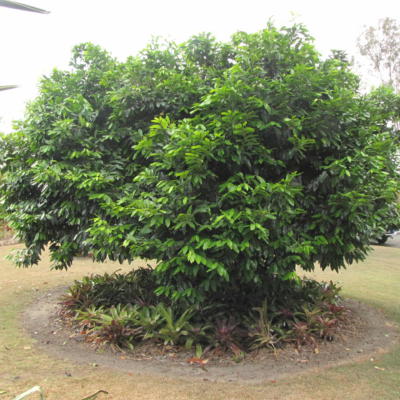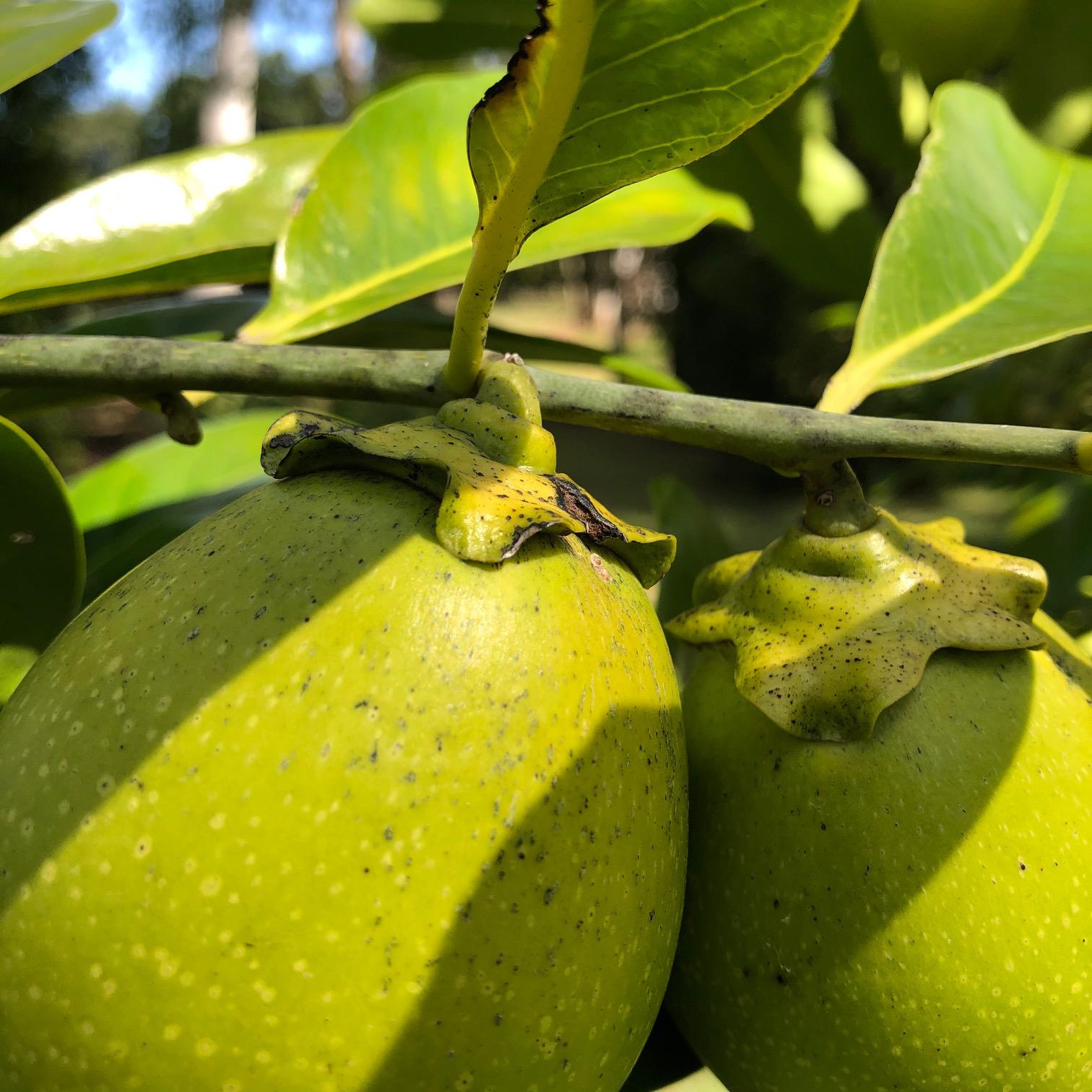If you love growing fruit, especially tropical fruits, then a Chocolate Pudding Fruit Tree may be on your list of trees to make a space for. Or perhaps you already have one in your garden and are not sure when to pick the fruit?
n this post I’d like to introduce you to this utterly delectable fruit.
The botanical name for the Chocolate Pudding Fruit Tree is Diospyros nigra/ D. digyna. It’s closely related to persimmon. The most common persimmon we find in Australia is D. kaki, the Japanese Persimmon, but there are quite a few different species of Persimmon growing around the world. The texture of a ripe Chocolate Pudding Fruit resembles that of a soft Persimmon, but the flavour is quite different.
You probably won’t see it in the fruit shops due to its rapid ripening phase and very soft ripe skin. So, you may have to grow your own or befriend a person with a tree and plenty of fruit.
Look at its dark chocolate flesh. It’s very much like the packet chocolate pudding mix my mum would serve us for dessert when I was a child. The Chocolate Pudding Fruit almost tastes chocolatey. You could convince yourself that it was chocolate, but not quite. So, all you need to do in order to create an authentic chocolate pudding is to scoop out the flesh and add cocoa to it. More on that later…

Growing the Tree
Our tree is about 2 metres tall at 4 years old. (The one in the picture is a tree in a local garden, not ours.) It grows in a partly shaded spot in our garden but will tolerate full sun. If you are in cooler climates, such as Melbourne, find a protected spot in your garden that’s warm and sunny. No frost please! garden.
Provide regular water to keep the soil most. The area in our garden was heavy clay, so has been improved with gypsum, trace elements (as our soils are deficient in many traces), and lots of compost, regular additions of Humates and animal manures.
The tree does need staking in the early years as it can be a bit top-heavy. For our tree, after a serious prune post fruiting this year, we may be able to address that issue to give it more stability by allowing the trunk to catch up in strength to support the canopy. As it matures, the canopy will be ‘lifted’ ie. lower branches pruned, and it will make a beautiful small shade tree.

When to pick the fruit
The fruit have hung on the tree for at least 6 months, growing ever so slowly over the late summer, autumn and winter. In our garden they are ready to harvest now in early September.
It can be tricky knowing when to pick the fruit though, as they are hard on the tree, and only soften once they fall. In the end, it’s a rush to capture them at just the right time before they fall onto the ground and rot.
So, here’s a tip. At the stem end of the fruit is the calyx. It’s like a little cap at the top of the fruit. For the life of the fruit, the calyx sits adjoined to the fruit very closely. You’ll see that in the first photo.
As the fruit nears its harvest time, the skin begins to turn ever so slightly lime green and the calyx lifts back off the fruit to resemble a tiny little tutu. You can see between the calyx and the top of the fruit, as there will be a 1-2mmm gap. This is becoming apparent in the second photo.
At this stage the fruit is still hard. Cut or Twist the fruit to release it from the branch and store it on a plate on the bench for 2-4 days. During this time the skin will blacken and the fruit will become very soft indeed. This is the time to eat it.
Cut it open with a knife and scoop out the flesh with a spoon. You can’t peel off the flesh as it’s far too soft and breaks easily.
Growing Chocolate Pudding Fruit (Black Sapote)
You’ll find there are about 4-6 seeds in each fruit. They are shiny and smooth, easy to remove. These will grow into new trees if sown in seed raising mix. Sow about 3 cm deep soon after taking them from the fruit as they have a poor germination rate if allowed to dry out.
Germination may take up to 2 months. I sow them in forestry tubes, one to a tube. There are a number of varieties on the market, so as for any seed grown plant, they may not grow true to type. Transplant them out of the pot as soon as you see thee roots appearing at the holes in the bottom of the pot.
You can also grow them from cuttings and aerial layering if you are keen to ensure you have exactly the same as the parent plant.
You can grow the plant in a large pot or tub for a couple of years, but in time it will outgrow the root zone and will need to go into the ground.
Chocolate Pudding Fruit/Black Sapote Recipes
Click here to find recipes for this delicious fruit.






